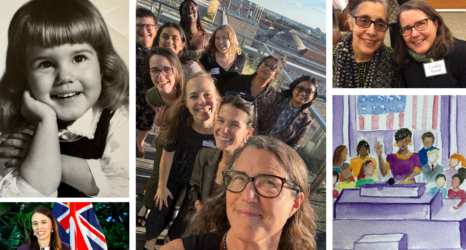If women’s history is told truthfully and interpreted correctly, it can enlighten the present. Similarly, false testimony and faulty interpretation can do great damage. And that brings us to bones.
Archaeology is typically a topic that does not capture public attention. The process of uncovering ancient artifacts is incredibly slow; excavations can take years to complete, and the modern fast-paced world has little interest in observing the removal of dirt, one centimeter at a time. Typically, archaeological finds make the news only in instances of a grand discovery—like the arrival of humans in the Americas or the “world’s oldest” something.
However, coverage also tends to swell around a topic that complicates both archaeological interpretation and modern debates surrounding gender: the so-called “warrior woman.” If a skeleton is sexed as female and a spear is found nearby, there will almost surely be publicity—take, for instance, the coverage of the infamous Amazon warriors. But articles about a “warrior woman,” even from the most well-intentioned of journalists, tend to reinforce gender norms and the gender binary in a way that does a tremendous disservice to feminist discourse now and erases the actual and potential lived experiences of humans from way back when.
Journalists are often unaware of gender archaeology, which utilizes Judith Butler’s theories of gender performance to expand our understandings of gender in past societies and has repeatedly demonstrated that a skeleton sexed as “female” does not equate a body perceived as “woman.” (Sexing, by the way, is not always accurate in the first place.) Assuming that a skeleton identified as “female” and that of a “woman” in the modern, western sense of the term essentially forces current, societally-specific understandings of gender onto the past. While the performativity of gender may be visible on the archaeological record, the understandings humans had of their own genders, sexes and cultural gender roles have evolved considerably over time, and correlate to certain artifacts in different societies.
Feminists theorists have long understood gender as independent of sex. In fact, as Judith Butler reminds us, gender and sex are social constructs that may well not have existed in past societies. When a skeleton is found with artifacts indicating that it was a warrior and the skeleton is also sexed as female, a variety of interpretations are possible: this person may have identified as a variety of genders or could have identified as a gender that is not considered today.
Further, coverage of such cases can sometimes veer from informative to sensational. If a skeleton is sexed as female and the context surrounding its burial truly indicates that they were perceived as a woman, it is unhelpful for the media to act like such a basic fact of a skeleton’s perceived experiences is disruptive. Instead of promoting the idea that women warriors have always been outliers, it should be stressed that women have always been warriors—and that the strength and honor associated with warriors are, therefore, feminine characteristics.
As physical anthropologist Linda Hurcombe describes, wanting women to have been hunters, as opposed to gatherers, in ancient societies does not demonstrate their empowerment—it merely reinforces modern gender norms and what is understood as desirable. If we truly wish to empower women, tasks that are understood as feminine should not be scorned, but should be valued equally with masculine tasks. During any given time and in any given society, hunting could have been a less desirable task than gathering for myriad reasons. By assuming that this was not the case, we are retroactively placing women in a subordinate gender role and effectively recreating modern gender relations in the past.
Shock and awe around “warrior women” applies a rigid gender binary onto the past instead of a feminist lens. Instead of forcing modern understandings of gender onto the past, we would do well to consider what aspects of women’s history have been lost to our own revisions—and what strength women could derive from them.





